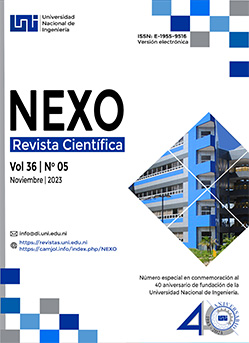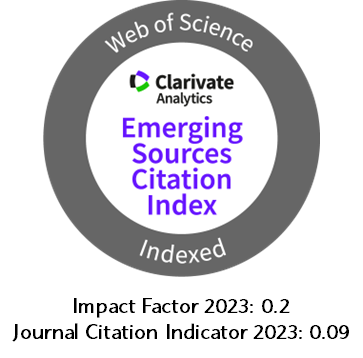Effects of silica nanoparticles on glass and carbon fiber epoxy composites
DOI:
https://doi.org/10.5377/nexo.v36i05.17286Keywords:
Reinforced polymer, mechanical properties, hybrid nano silica composites, glass fiberAbstract
In a variety of industries, including construction, automotive, marine, and aerospace, hybrid composite materials have great promise as engineering materials. By carefully choosing both the fibers and matrix employed, they enable designers to obtain desired qualities to a significant degree. The qualities of the material may be altered and adapted by adding various fiber types to a common resin matrix. In order to assess their potential for structural applications, the mechanical properties of a glass and carbon fiber epoxy composite reinforced with silica nanoparticles were examined and compared to those of clean epoxy. The samples were created using the vacuum bag process and heat-cured regardless of the laminated material. To guarantee accurate and trustworthy findings, mechanical characteristics including E1, E2, G12, and v12 were assessed using the tensile test and the relevant ASTM standards. To evaluate substantial variations in the mechanical characteristics of the glassy epoxy and carbon epoxy composites, experimental and numerical modeling will be used. The findings of this study suggest that silica nanoparticles improve the mechanical properties of composite materials. As a result, performance and strength are enhanced when using these reinforced epoxy compounds in structural applications.
Downloads
255
Downloads
Published
How to Cite
Issue
Section
License
Copyright (c) 2023 Universidad Nacional de Ingeniería

This work is licensed under a Creative Commons Attribution 4.0 International License.
The authors who publish in Nexo Scientific Journal agree to the following terms:
- Authors retain the copyright and grant the journal the right of the first publication under the license Creative Commons Attribution License, which allows others to share the work with a recognition of the authorship of the work and the initial publication in Nexo Scientific Journal.
- Authors may separately establish additional agreements for the non-exclusive distribution of the version of the work published in the journal (for example, in an institutional repository or a book), with the recognition of the initial publication in Nexo Scientific Journal.
- Authors are allowed and encouraged to disseminate their works electronically (for example, in institutional repositories or in their own website) before and during the submission process, as it can lead to productive exchanges, as well as earlier and greater citation of published works.











